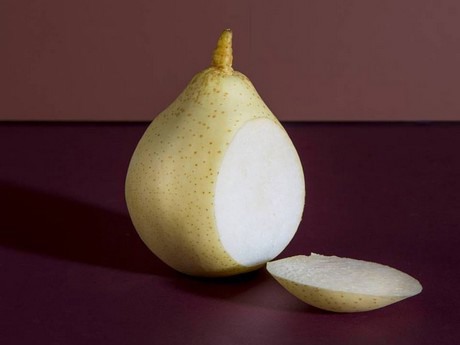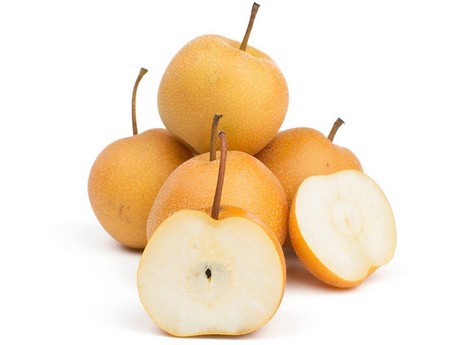September marks the start of the peak season for domestically-grown Asian pears in the United States. California is a big contributor to this volume, but there are also other notable local deals in states like Pennsylvania and New Jersey. This year's California crop began a little later than usual.
"We have been receiving California-grown Asian pears since August," said Patrick Ahern of Baldor Specialty Foods. "Typically we start receiving them at the end of July, so this means the season is a little later than normal. California is in peak season during September and October and we will have availability from here until the end of October when we switch back to containers from Chile."
Ahern said Chilean Asian pears arrive on both coasts, and these pears are available for much of the year. "Between California and Chile, we have Asian pears available year-round. For some time we did have a small program from a grower in Pennsylvania, but they have chosen to ship their pears out themselves through mail order. We are currently planning on having a program of New Jersey pears from next year."

Prices are low now
When the California season began, the price of Asian pears rose on the back of strong demand for domestically-grown fruit along with the transition from Chile. Ahern explained that this typically occurs each time there is a transition as the market needs to stabilize. "During the changeover, prices are generally higher for a two to three week period."
But prices have now fallen back, which is the pattern that is usually seen. "Supplies are pretty good right now," Ahern noted. "Prices are currently in the mid teens, which is quite normal for this time of year."
He added that Asian pears are juicy and sweet, but also delicate. As a result, they need to be handled with care. "Asian pears are very juicy and crunchy, with some calling it the apple pear," he said. "They are quite susceptible to damage because of the amount of moisture inside them. This is why we usually see Asian pears individually wrapped in a protective wrapping in stores. They can also develop a brown ring around the core which is very difficult to detect. More recently, however, advanced imaging has reduced the rate of such defects in shipments."

More commonly seen
Asian pears were once regarded as an exotic item. But with year-round availability along with its presence on certain holidays, Asian pears have been making more of an appearance. Ahern said that Baldor Specialty Foods now sells about as many Asian pears as it does other pear varieties.
"The category has grown over the years as more people have become accustomed to it," he shared. "Some groups - such as Koreans - import Asian pears for the Holiday season. These can be as large as a softball as the boxes come in 6 or 9 counts - they are really something to see. They are available in December and are customarily given in gift boxes."
For more information:
Patrick Ahern
Baldor Specialty Foods
Ph: +1 (718) 860-9100
[email protected]
www.baldorfood.com










